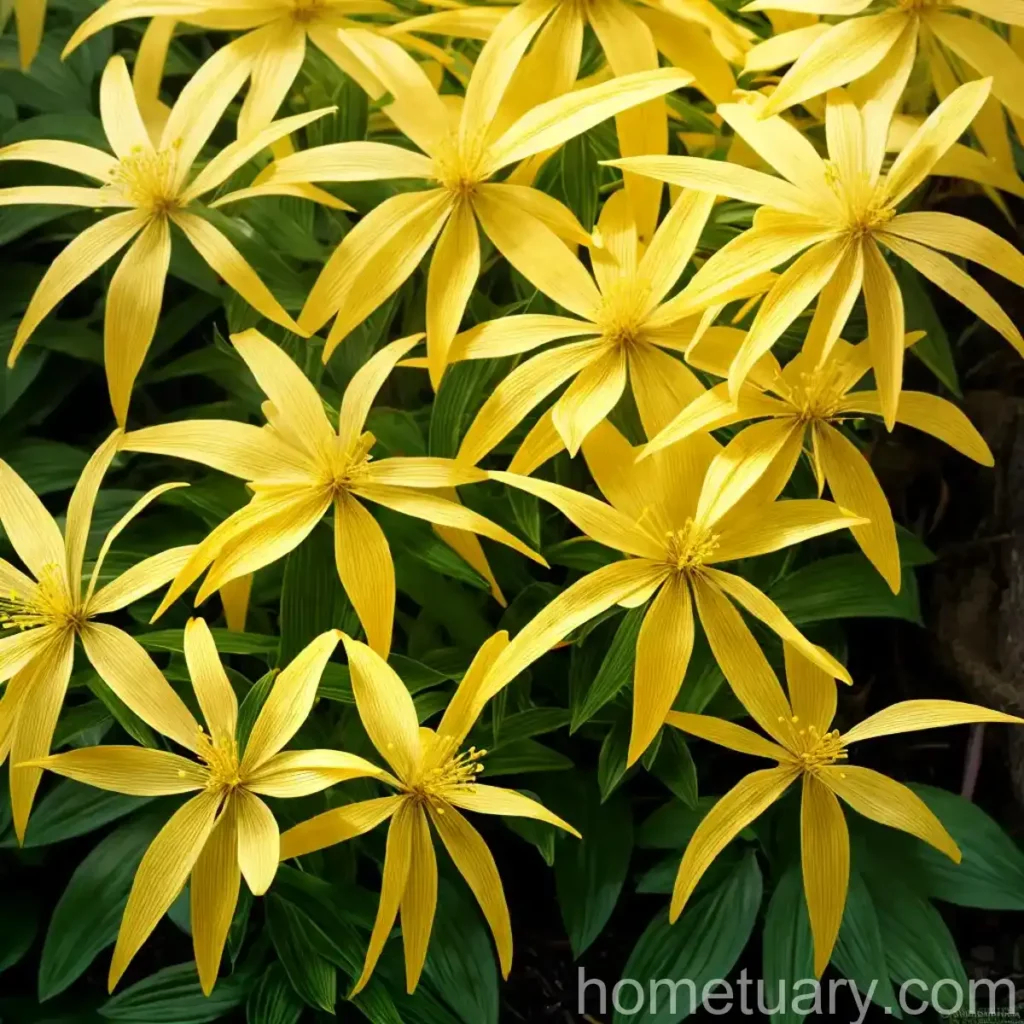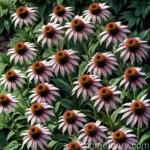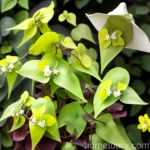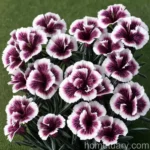The Slender Goldshower (Galphimia gracilis): A Comprehensive Guide
What is the Slender Goldshower (Galphimia gracilis)?
The Slender Goldshower, scientifically known as Galphimia gracilis, is an ornamental shrub native to Mexico and other parts of Central America. With its attractive golden-yellow flowers and slender, elegant appearance, the Slender Goldshower has become a popular choice for landscaping and garden enthusiasts. This flowering plant belongs to the family Malpighiaceae and is known for its remarkable resilience and adaptability.
The Slender Goldshower is characterized by its bright yellow flowers, which bloom profusely and add a splash of color to any garden or landscape. This resilient plant is relatively low-maintenance, making it an excellent choice for both novice and experienced gardeners. In this comprehensive guide, we will explore the key aspects of caring for the Slender Goldshower, including its cultural requirements, uses, maintenance, and common diseases and pests.
Key Takeaways – Slender Goldshower (Galphimia gracilis)
Before delving into the specific care requirements and maintenance tips for the Slender Goldshower, let’s outline some key takeaways about this charming plant:
- Plant Name: Slender Goldshower (Galphimia gracilis)
- Common Names: Gold shower plant, Slender goldshower plant
- Botanical Family: Malpighiaceae
- Native Habitat: Mexico and Central America
- Characteristic Feature: Bright golden-yellow flowers
- Adaptability: Resilient and low-maintenance
- Uses: Ornamental purposes, landscaping, garden borders
- Attributes: Drought-tolerant and suitable for container gardening
- Appeal: Attracts pollinators such as butterflies and bees
Culture
Uses
The Slender Goldshower is valued for its ornamental and aesthetic appeal, making it a popular choice for various landscaping and gardening purposes. Some common uses of the Slender Goldshower include:
- Ornamental Plant: The vibrant yellow flowers of the Slender Goldshower make it an excellent choice for ornamental planting, adding a cheerful and vibrant touch to any garden or landscape.
- Landscaping: Due to its slender and graceful growth habit, the Slender Goldshower is often used in landscaping to create visual interest, define borders, or enhance the overall aesthetic of outdoor spaces.
- Pollinator Attraction: The flowers of the Slender Goldshower have nectar that attracts pollinators such as butterflies and bees, making it a beneficial addition to pollinator-friendly gardens.
Water
Proper watering is essential for the health and vitality of the Slender Goldshower. While this plant has good drought tolerance once established, it is important to provide adequate moisture, especially during the establishment phase and in periods of prolonged dryness.
- Watering Frequency: Water the Slender Goldshower regularly during the growing season, ensuring that the soil is consistently moist but not waterlogged. Reduce the frequency of watering during the dormant season.
- Soil Moisture: The plant thrives in well-draining soil. Ensure that the soil does not become excessively dry, especially during hot weather, but avoid overwatering, as this can lead to root rot.
- Establishment Period: Newly planted Slender Goldshower shrubs require regular watering to aid in root establishment. Once the plant is established, it can tolerate periods of reduced moisture.
Sunlight
The Slender Goldshower requires ample sunlight to thrive and produce an abundance of vibrant blooms. Proper sunlight exposure is crucial to the plant’s overall health and flowering performance.
- Sun Exposure: Plant the Slender Goldshower in a location that receives full sunlight for the majority of the day. This will promote healthy growth and encourage prolific flowering.
- Shade Tolerance: While the plant prefers full sun, it can tolerate partial shade, particularly in regions with intense afternoon sunlight or during periods of extreme heat.
- Indoor Cultivation: When growing the Slender Goldshower indoors, place it in a bright, sunny window or under grow lights to ensure it receives adequate light for healthy growth.
Fertilizer
Fertilization plays a key role in supporting the growth, blooming, and overall vigor of the Slender Goldshower. Proper application of fertilizer will help ensure that the plant receives essential nutrients for optimal performance.
- Fertilizer Type: Use a balanced, slow-release fertilizer formulated for flowering shrubs and ornamental plants. Alternatively, a high-phosphorus fertilizer can promote abundant flowering.
- Application Timing: Apply fertilizer in the early spring, just before the onset of the growing season, to provide the plant with essential nutrients as it begins its active growth phase.
- Frequency: A single application of slow-release fertilizer at the start of the growing season is usually sufficient. Avoid over-fertilizing, as this can lead to excessive foliage growth at the expense of flowers.
Soil
The choice of soil and its quality significantly impacts the health and performance of the Slender Goldshower. When selecting a planting site or preparing a container for this plant, consider the following soil-related factors:
- Soil Type: The Slender Goldshower thrives in well-draining soil with a loamy or sandy texture. Avoid heavy, compacted soils that can impede drainage and lead to waterlogged conditions.
- Soil pH: The plant prefers slightly acidic to neutral soil with a pH range between 6.0 and 7.0. Conduct a soil test to assess the pH and make any necessary amendments to achieve the optimal pH range.
- Soil Amendments: Incorporate organic matter such as compost or well-rotted manure into the soil when planting or repotting to improve its structure and fertility.
Pruning
Pruning is an important aspect of Slender Goldshower maintenance, contributing to its overall appearance, health, and flowering potential. Proper pruning practices can help shape the plant, remove dead or damaged growth, and encourage new blooms.
- Pruning Timing: Conduct major pruning in the late winter or early spring before the onset of new growth. Light, routine pruning can be carried out throughout the growing season to maintain the plant’s shape and remove spent flowers.
- Techniques: Use sharp, clean pruning shears to make precise cuts. Remove any dead, diseased, or crossing branches, and shape the plant to maintain a desirable size and form.
- Deadheading: Regularly remove spent flowers to promote continuous blooming and prevent the plant from redirecting energy into seed production.
Propagation
The propagation of the Slender Goldshower allows gardeners to expand their plant collection or share this beautiful species with others. While the plant can be propagated by various methods, the following techniques are commonly used:
-
Propagation Methods: The Slender Goldshower can be propagated from seeds, stem cuttings, or by division. Each method has its advantages and challenges, and the choice of technique depends on the gardener’s preferences and the availability of plant material.
-
Seed Propagation: Start seeds indoors in a well-draining potting mix, maintaining warmth and moisture until germination occurs. Transplant the seedlings into individual containers or the garden once they have developed several sets of true leaves.
-
Stem Cutting Propagation: Take stem cuttings from the Slender Goldshower during the active growing season. Remove the lower leaves, dip the cut end in rooting hormone, and plant the cuttings in a moist rooting medium. Provide warmth and humidity to encourage root development.
-
Division: Divide mature plants into smaller sections, ensuring that each division has a good root system and several stems. Replant the divisions in suitable growing locations, providing proper care until they become established.
Container Popularity
The Slender Goldshower’s adaptability and compact size make it an excellent candidate for container gardening. When growing this plant in containers, several considerations should be taken into account to ensure its health and long-lasting beauty.
-
Container Selection: Choose a well-draining container with adequate drainage holes to prevent waterlogging. Consider the mature size of the Slender Goldshower when selecting a container, ensuring that it provides ample space for the plant’s roots to grow.
-
Potting Mix: Use a high-quality, well-draining potting mix specifically formulated for flowering shrubs or ornamental plants. Avoid heavy, moisture-retentive soils that can lead to root rot in container-grown plants.
-
Placement: Position the container in a location that receives ample sunlight, as the Slender Goldshower thrives in full sun exposure. Ensure that the container is stable and secure to prevent tipping over in windy conditions.
Common Diseases
Despite being a relatively resilient plant, the Slender Goldshower is susceptible to certain diseases, particularly those related to fungal infections and environmental stress. By being vigilant and proactive, gardeners can minimize the risk of disease development and preserve the plant’s health.
-
Leaf Spot: Fungal diseases such as leaf spot can affect the foliage of the Slender Goldshower, leading to the formation of dark, irregular spots on the leaves. Ensure good air circulation and avoid overhead watering to reduce the risk of leaf spot.
-
Powdery Mildew: Powdery mildew may develop in conditions of high humidity and poor air circulation. To prevent this fungal disease, maintain adequate spacing between plants and avoid overcrowding in garden beds or containers.
-
Root Rot: Excessive soil moisture and poor drainage can lead to root rot in the Slender Goldshower. Avoid overwatering and ensure that the plant is situated in well-draining soil to prevent this potentially devastating condition.
Disease Diagnosis
Diagnosing and addressing potential diseases in the Slender Goldshower requires a keen eye for visual symptoms and a proactive approach to plant care. By regularly inspecting the plant and taking preventive measures, gardeners can minimize the impact of diseases and maintain the plant’s vitality.
-
Visual Inspection: Regularly examine the foliage, stems, and overall appearance of the Slender Goldshower for any signs of discoloration, spotting, or abnormal growth. Early detection of disease symptoms allows for prompt intervention.
-
Cultural Practices: Practice good cultural techniques, such as maintaining proper spacing between plants, providing adequate air circulation, and avoiding overwatering, to create an environment that is less conducive to disease development.
-
Prompt Treatment: If symptoms of disease appear, take immediate action to address the underlying issues. This may involve adjusting watering practices, improving soil drainage, or applying appropriate fungicidal treatments as recommended.
Common Pests
While the Slender Goldshower is generally resistant to pests, certain insect pests may occasionally target this plant. Recognizing and addressing potential pest infestations is important to preserve the plant’s health and aesthetics.
-
Aphids: Small, soft-bodied insects known as aphids may feed on the tender growth of the Slender Goldshower, causing distortion and yellowing of the foliage. Use insecticidal soaps or neem oil to control aphid populations.
-
Spider Mites: These tiny arachnids can infest the undersides of the plant’s leaves, causing stippling, discoloration, and webbing. Regularly rinse the foliage with a strong blast of water to dislodge and remove spider mites.
-
Scale Insects: Scale insects may appear as immobile, waxy bumps on the stems and leaves of the Slender Goldshower. Use horticultural oil or insecticidal sprays to effectively target and control scale infestations.
Botanist’s Tips
To ensure the successful cultivation and enjoyment of the Slender Goldshower, consider the following tips from botanists and experienced gardeners who have cultivated this plant:
- Soil Drainage: Prioritize the use of well-draining soil or amend existing soil to improve drainage when planting the Slender Goldshower, as excess moisture can lead to root-related issues.
- Regular Monitoring: Routinely inspect the plant for signs of disease, pest activity, or other stress factors. Early intervention is key to preventing potential issues from escalating.
- Pollinator Support: Embrace the Slender Goldshower for its ability to attract pollinators and contribute to the biodiversity of the garden or landscape. Incorporate other pollinator-friendly plants to create a welcoming habitat for beneficial insects.
- Pruning Best Practices: When pruning the Slender Goldshower, aim for selective and judicious cuts to maintain a balanced and natural appearance. Avoid excessively aggressive pruning that can impact the plant’s vitality.
- Fertilization Timing: Apply fertilizer to the Slender Goldshower at the appropriate times, such as at the beginning of the growing season, to provide essential nutrients without overstimulating excessive foliage growth.
Fun Facts
- The Slender Goldshower is known for its long flowering season, often producing bright yellow flowers from spring through fall, providing a cheerful display of color for an extended period.
- This plant species has cultural significance in its native regions, where it may be used medicinally or for decorative and ceremonial purposes.
- The Slender Goldshower’s drought tolerance and adaptability make it a resilient choice for landscapes or gardens with varying environmental conditions.
Links to External Resources
I. Royal Horticultural Society – Galphimia gracilis
II. Missouri Botanical Garden – Galphimia gracilis
III. University of Florida IFAS Extension – Galphimia gracilis
IV. North Carolina State University – Galphimia gracilis
In conclusion, the Slender Goldshower (Galphimia gracilis) is an enchanting plant valued for its vibrant yellow flowers, adaptability, and low-maintenance nature. By understanding and implementing the cultural requirements, maintenance practices, and pest and disease management strategies outlined in this comprehensive guide, gardeners can cultivate and enjoy the beauty of this resilient ornamental shrub. Whether used in landscape design, container gardening, or pollinator-friendly plantings, the Slender Goldshower adds a touch of brightness and elegance to outdoor spaces, making it a delightful addition to any garden or landscape.
By adhering to best practices and leveraging the insights provided, enthusiasts can experience the joy of growing and nurturing the Slender Goldshower, while contributing to the biodiversity and aesthetic appeal of their outdoor environments.















